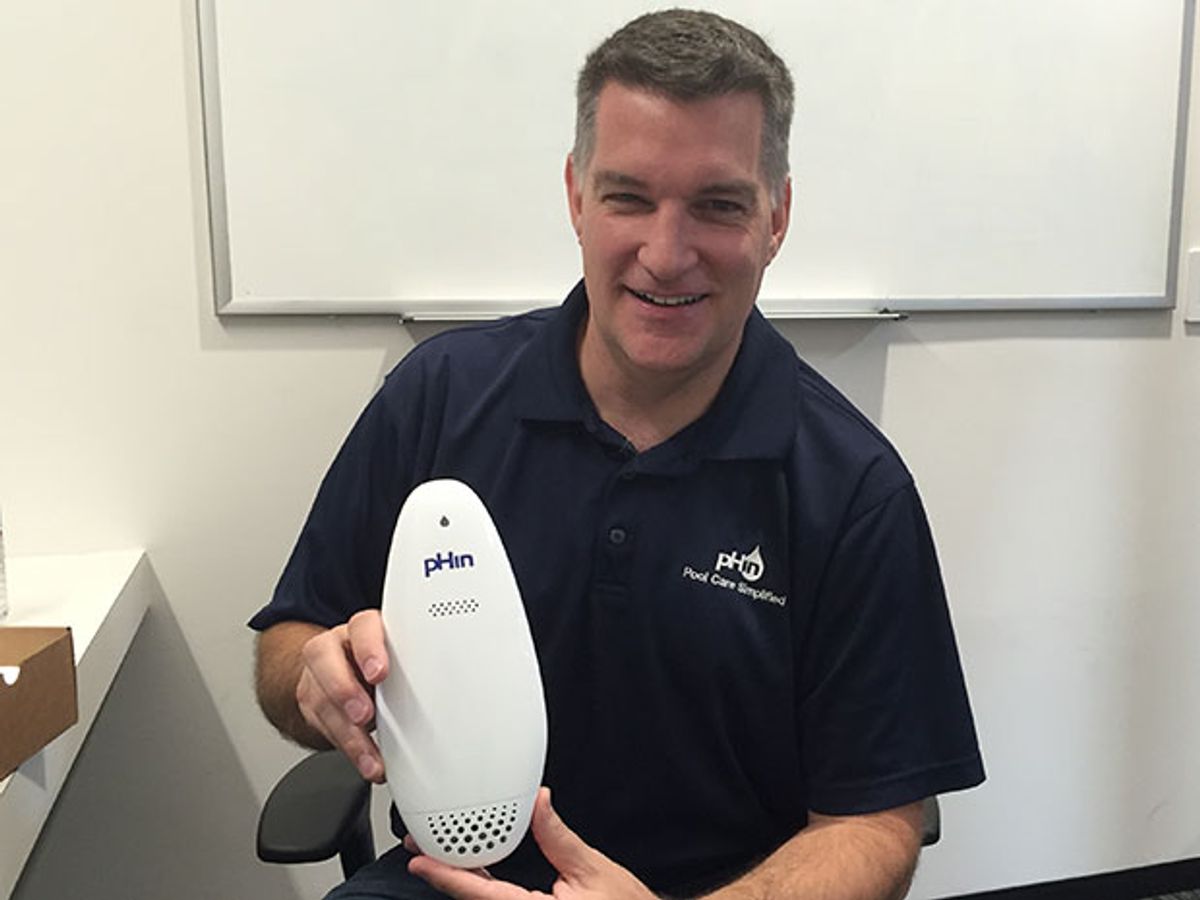Justin Miller’s resume is a tale of tech history: AT&T, Apple, Webvan (ouch), eBay, Plaxo…and then running a 250-person innovation center for Comcast. He left Comcast in 2014, looking to do a startup of some kind. And then, at a backyard barbecue, standing around a pool with a drink in hand, he ran one idea he’d been batting around past Mark Janes, a serial entrepreneur who had founded several startups in the United Kingdom before moving to the United States.
Miller’s idea: simplifying pool and hot tub care, in the way that Uber simplifies travel, and Instacart simplifies grocery delivery. But he wanted to take it one step further, by putting people’s pools on the Internet of Things so they can manage much of their own day-to-day maintenance.
The idea is a mix of just about everything hot in tech today: on-demand services, the IoT, and cloud. That could make it a joke. Remember “Pandora for Cats”? Or it could be that this kind of technology is positioned to catch a big wave.
Miller, of course, thinks it’s the latter. Janes agreed, and in the third quarter of 2014, the two started ConnectedYard. Since then, they’ve convinced Andy Rubin, cofounder and former CEO of both Danger and Android, along with Tandem Capital, and a number of other VCs, that the next big thing is indeed the connected pool. ConnectedYard has raised US $2.4 million so far, along with support in the form of office space, hardware engineering and other resources from Rubin’s Playground Global. Meanwhile, it has hired 30 people.

The pool gadget (really a device + app + system) they’ve built is called the pHin. Its hardware is a waterproof package of chemical sensors, a processor, a battery, and a bluetooth radio that is shipped with a starter kit of color-coded pouches of chemicals. The sensor package bobs around in the pool or hot tub, and communicates with a small WiFi bridge plugged in somewhere nearby. The sensor in the water sends regular updates to the bridge, reporting the water’s chlorine levels, pH, and temperature. The bridge then relays the data to ConnectedYard’s cloud server (the IoT part), and the server sends a notification to the user’s Apple or Android phone whenever action needs to be taken to balance the chemicals in the pool. The user follows the instructions to toss in the instructed number of different colored pods—say, two green (shock, a common pool treatment) and one blue (chlorine). The system keeps track of the number of pods used, and ships out new supplies every month or two, before the user runs out of them (that’s the Instacart part). If the pool needs more complicated service than a chemical adjustment, say, a filter repair—the phone app brings up a menu for on-demand pool servicing (that’s the Uber part).
ConnectedYard has priced the product as a subscription service; sign-up costs $499 for year-round pools and $399 for year-round hot tubs (and less for seasonal use). The hardware will come free with a subscription. It’s likely to be replaced every two years, which is the life of the chemical sensors and battery. (It won’t need recharging.)
The team had to overcome a lot of challenges to make pHin happen. Among them were lining up manufacturers for the chemical pods, recruiting a network of pool service firms, and writing the cloud software that tracks chemicals in the pool and in inventory for what he hopes will be upwards of hundreds of thousands of users. But getting the hardware to work was particularly tricky, he says. The sensors that measure water chemistry have been around for a decade, Miller says, but it was difficult to reduce the power consumption enough to make battery operation feasible. Antenna range, for a gadget that can drift around a large pool, was also problematic. And, he says, keeping the whole thing waterproof—particularly in a steamy hot tub, was more difficult than expected.
Another stumper: The gadget is essentially a computer, and computers, on occasion, need to be rebooted. Putting in some kind of external button, they realized, would make it harder to waterproof. The solution turned out to be a magnetic switch. The pHin ships with a magnet it its cap, to be used to swipe the internal switch that turns the gadget on for initial installation as well as for rebooting.
On the software side, Miller says ConnectedYard’s initial mistake was tracking the water quality too closely, triggering frequent alerts. “We needed to change that to average out the bumps and make the system behave more like a human than a machine. [We wanted it] to be accurate, but not overly demanding. The idea is to make pool care easier, not harder.” The system, Miller says, can’t be easily hacked, because the floating sensor system only sends out data, and doesn’t receive any.
ConnectedYard which just started shipping the product, expects to have over 10,000 customers in the continental United States by the end of this year.
The company says it isn’t stopping with getting the pool on the IoT, but isn’t announcing its next product just yet. However, because the founders were at a barbecue when they started this whole thing, I’m told it shouldn’t be too hard to figure out.
Tekla S. Perry is a senior editor at IEEE Spectrum. Based in Palo Alto, Calif., she's been covering the people, companies, and technology that make Silicon Valley a special place for more than 40 years. An IEEE member, she holds a bachelor's degree in journalism from Michigan State University.





